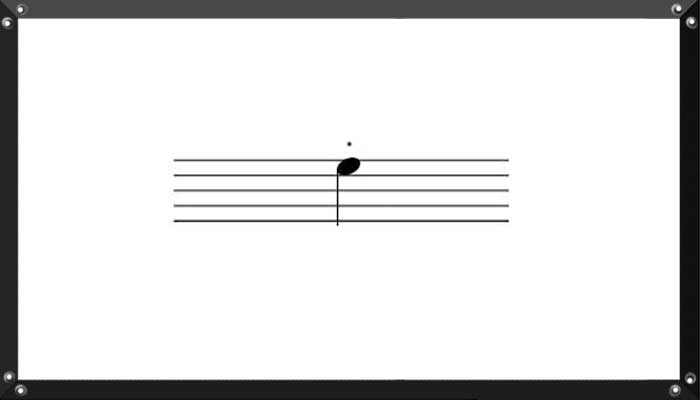

Music Theory

This indicates the musician should play the note shorter than notated, usually half the value, the rest of the metric value is then silent. Staccato marks may appear on notes of any value, shortening their performed duration without speeding the music itself.
Songs - Level 12
Solfeo - Reading Music
Piano Technique
Music Theory

A repeated passage is to be played with different endings on different playings; it is possible to have more than two endings (1st, 2nd, 3rd ...).
Scales
Piano Technique
Chords
F - - - B♭ - C -
You should know how to play these 3 chords.
| Repeat this 9 Times | |
|---|---|
Solfeo - Reading Music
Music Theory

Broadly (40–60 bpm). Is also a very slow tempo. Many classical music use this tempo. Some ballads and romantic music.
Don't forget these:
[326]. Larghissimo: under-24
[342]. Grave: 25-45
[360]. Largo: 40-60>br>
[306]. Adagio: 66-75
[292]. Andante: 96-107
[194]. Moderato: 108-120
[201]. Allegro: 121-168
Songs - Level 12
Piano Technique
Solfeo - Reading Music
Songs - Level 14
Scales
Piano Technique
Music Theory

Upper - Rapidly play the principal note, the next higher note (according to key signature) then return to the principal note for the remaining duration. In most music, the mordent begins on the auxiliary note, and the alternation between the two notes may be extended. In handbells, this symbol is a "shake" and indicates the rapid shaking of the bells for the duration of the note. Lower - Rapidly play the principal note, the note below it, then return to the principal note for the remaining duration. In much music, the mordent begins on the auxiliary note, and the alternation between the two notes may be extended.
Chords
G - - - D - - - C - - - Em
You should know how to play these 4 chords.
Solfeo - Reading Music
Piano Technique
Songs - Level 15
Music Theory

A continuous, unbroken glide from one note to the next that includes the pitches between. Some instruments, such as the trombone, timpani, non-fretted string instruments, electronic instruments, and the human voice can make this glide continuously (portamento), while other instruments such as the piano or mallet instruments blur the discrete pitches between the start and end notes to mimic a continuous slide (glissando).
Chords
C - - - Am - - - F - - - G
You should know how to play these 4 chords.
| Repeat many times.... | |
|---|---|
Solfeo - Reading Music
Songs - Level 16
Music Theory

The first half of the principal note's duration has the pitch of the grace note (the first two-thirds if the principal note is a dotted note).
Piano Technique
Scales
Solfeo - Reading Music
Music Theory

Slowly (45–60 bpm). This is the most popular term for slow music. Also this is a very popular tempo for ballads, and slow pop music.
Don't forget these:
[326]. Larghissimo: under-24
[342]. Grave: 25-45
[360]. Largo: 40-60
[380]. Lento: 45-65
[306]. Adagio: 66-75
[292]. Andante: 96-107
[194]. Moderato: 108-120
[201]. Allegro: 121-168
Piano Technique
Chords
F - - - Dm - - - Gm - - - C - - - Bb - - - Bbm - - - G7
You should know how to play these 7 chords.
| Repeat 7 times | |
|---|---|
| Then this: | |
|---|---|
Solfeo - Reading Music
Songs - Level 16
Scales
Solfeo - Reading Music
Music Theory

Play the note louder, or with a harder attack than surrounding unaccented notes. May appear on notes of any duration.
Piano Technique
Chords
G - - - Bm - - - C - - - D - - - Am
You should know how to play these 5 chords.
| Repeat 9 times | |
|---|---|
| Then this: |
|---|
| Chorus: | |
|---|---|
Solfeo - Reading Music
Scales
Songs - Level 16
Piano Technique
Music Theory

Tells the player to put the sustaining pedal down. - Release Pedal Tells the player to let the sustain pedal up.
Solfeo - Reading Music
Chords
Piano Technique
Scales
Music Theory

Indicates the number of measures in a resting part without a change in meter to conserve space and to simplify notation. Also called gathered rest or multi-bar rest.
Songs - Level 16
You have so far...
Do you want to continue learning like this?